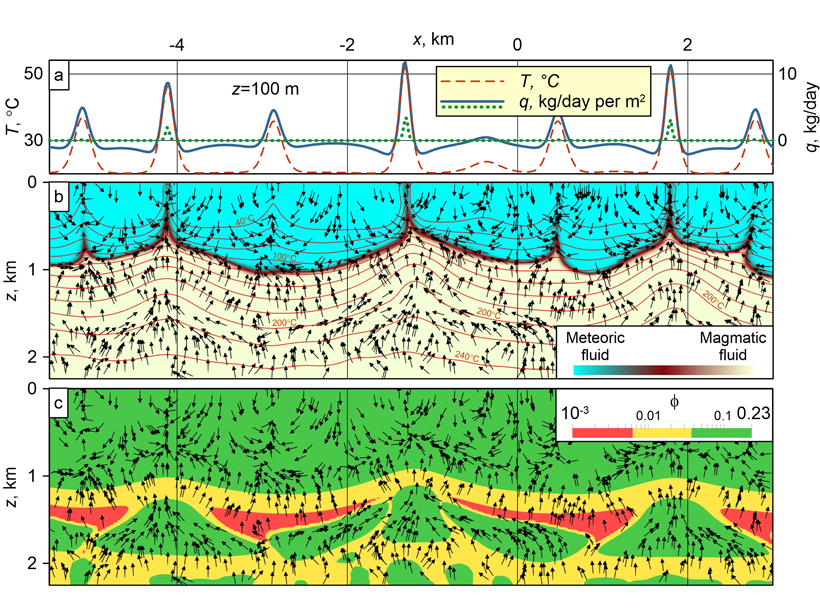Source: Journal of Geophysical Research: Solid Earth
Utkin and Afanasyev [2021] present a semi-empirical coupled model of compaction-driven fluid flow and numerically solve it to simulate non-reactive transport of magmatic fluid across both the ductile and brittle zones. Their approach accounts for the thermal softening of the rocks and the plastic deformation of their solid matrix through decompaction weakening while guaranteeing material balance for the fluid and solid phases everywhere in the model.
A single numerical simulation concurrently models the following physical mechanisms: Porosity waves form vertical high-porosity channels which transport magmatic fluid across the ductile zone, culminating in high-porosity lenses right beneath the brittle to ductile transition. In this transition zone, magmatic fluid transport occurs through the roof of those high-porosity lenses, resulting in a plume of hydrothermal convection in the brittle zone sitting atop each lens and following a narrowing path toward the surface. The pattern of hydrothermal convection in the brittle zone is completed by meteoric water forming other plumes between the lenses as well as mixing with the magmatic fluid in a process that transfers heat to the surface.
Studying the physical mechanisms of fluid transport in the upper crust is particularly relevant to understand the formations of exploitable geothermal resources and of ore deposits.
Citation: Utkin, I., & Afanasyev, A. [2021]. Decompaction weakening as a mechanism of fluid focusing in hydrothermal systems. Journal of Geophysical Research: Solid Earth, 126, e2021JB022397. https://doi.org/10.1029/2021JB022397
—Beatriz Quintal, Associate Editor, JGR: Solid Earth
Text © 2021. The authors. CC BY-NC-ND 3.0
Except where otherwise noted, images are subject to copyright. Any reuse without express permission from the copyright owner is prohibited.

